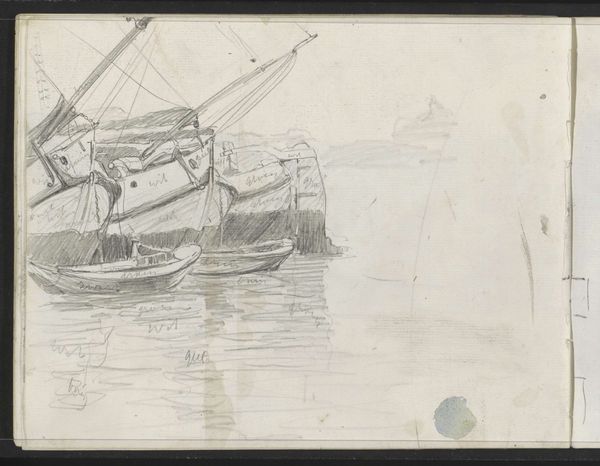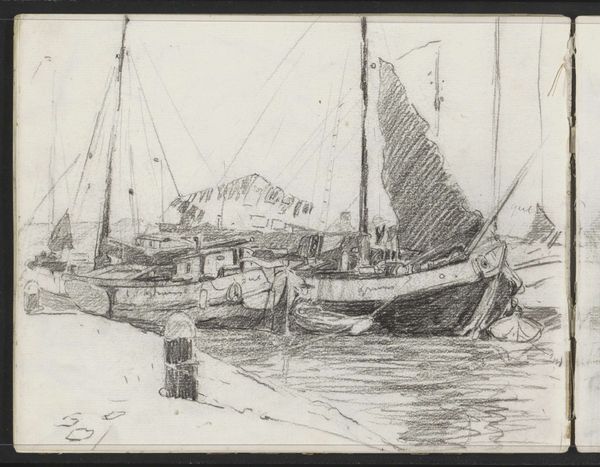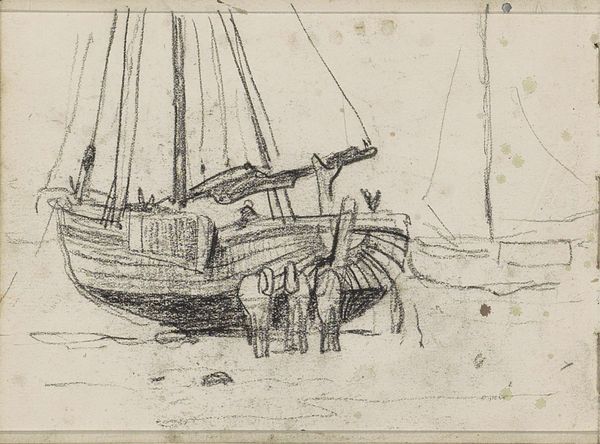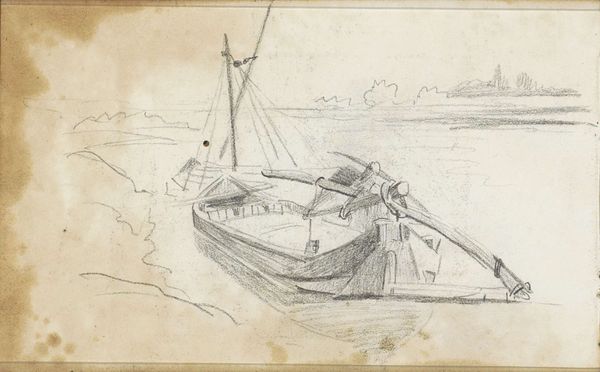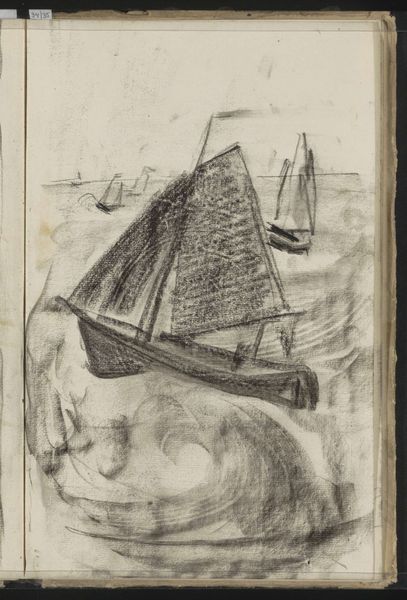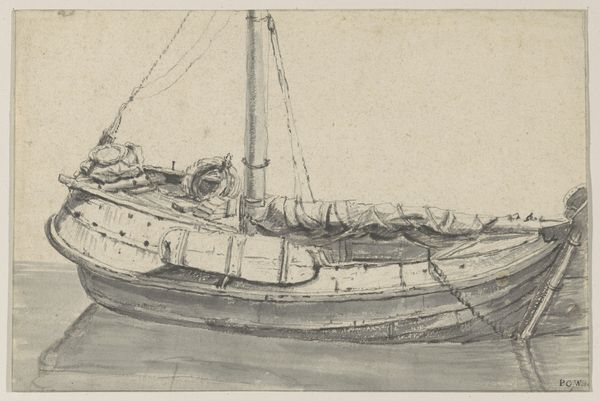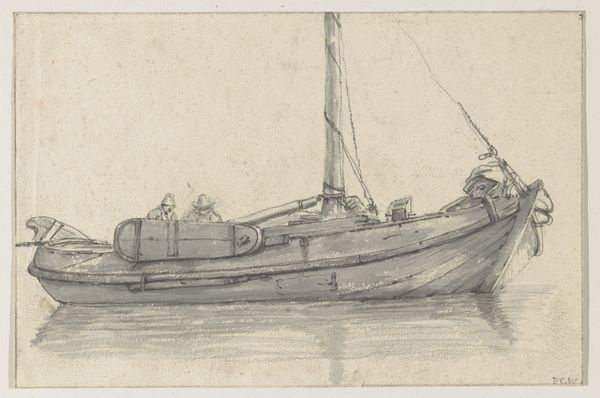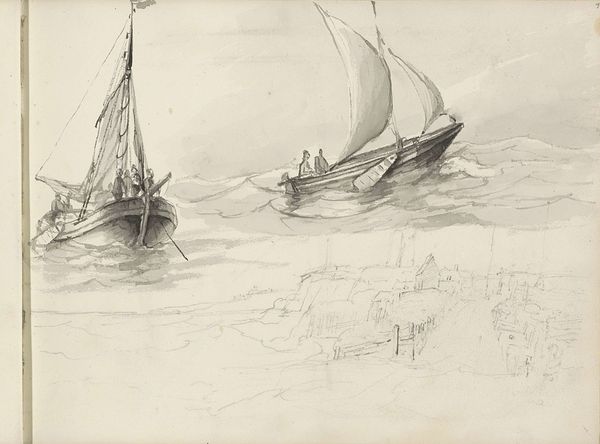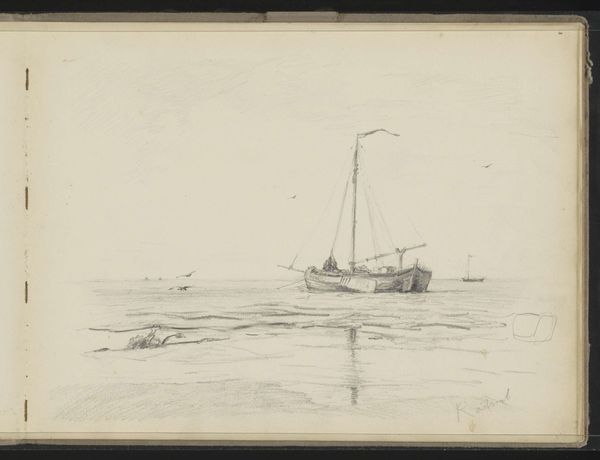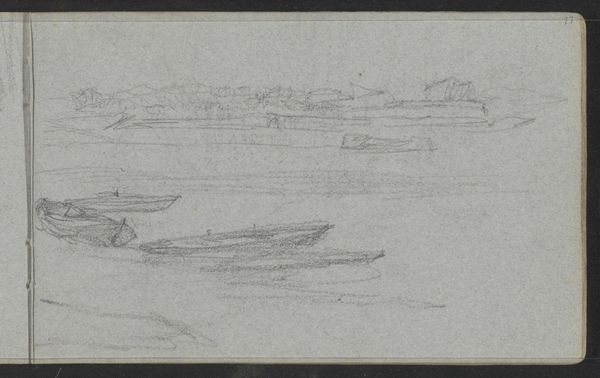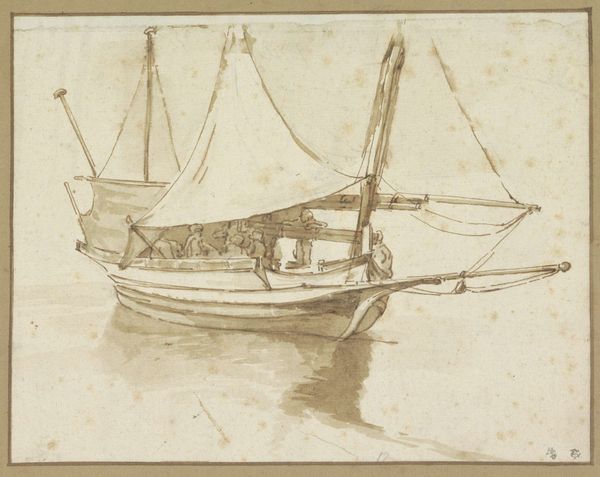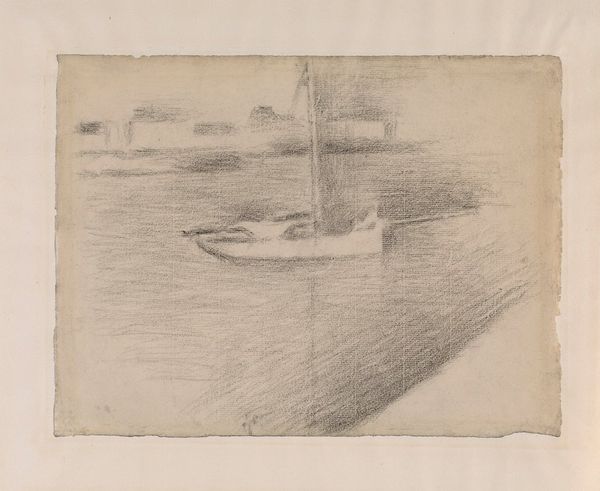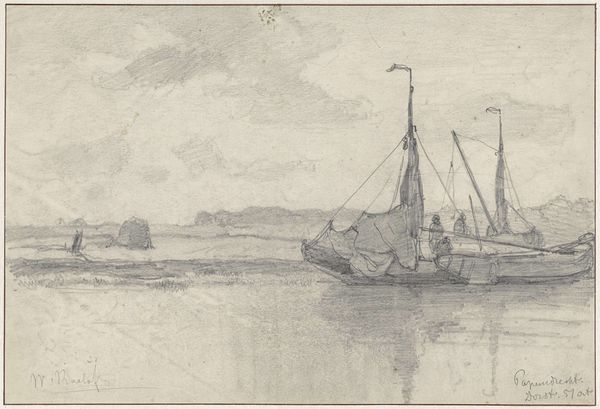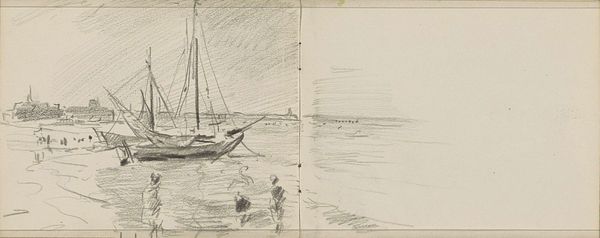
drawing, pencil, graphite
#
drawing
#
landscape
#
sketch
#
pencil
#
graphite
#
sketchbook drawing
#
cityscape
#
realism
Copyright: Rijks Museum: Open Domain
Curator: Here we have Willem Witsen's "View of Amsterdam with Ships," a pencil and graphite drawing created around 1910-1915. It's currently held here at the Rijksmuseum. Editor: It feels so immediate, almost like a fleeting glimpse captured on the go. There’s a raw quality in the lines, a deliberate lack of polish. Curator: Absolutely. Witsen was deeply interested in representing modern life and labor. The choice of graphite, a readily available material, and the sketch-like quality underscore this. It evokes a sense of the everyday worker, perhaps documenting their own environment. The watercraft themselves were tools of labor and transport, essential to the economic vitality of the city. Editor: The ships, and particularly how he renders them, almost dissolve. It’s less about a perfect depiction and more about how light and shadow interacts with the materials. Are those the docks and factories behind the boat? How different the cityscape looked then. It speaks to how Amsterdam has changed since the exploitation of workers during this period and now, through deindustrialisation. Curator: Precisely. Witsen was part of a larger artistic movement that focused on the socio-economic realities of urban life. The perspective from the water highlights Amsterdam’s connection to the sea, crucial to its identity and economy, but it also puts the viewer in a position of acknowledging their reliance on the waterways for access to trade routes. What are the cultural connections to draw from here? Editor: What resonates with me is how Witsen utilizes very simple, almost utilitarian materials – pencil and paper – to capture something monumental: Amsterdam's industrial might and dependence. It makes you consider the labor involved not just in sailing those ships, but in producing the materials themselves. It also blurs any sense of separation between art and lived experience in that place and moment. Curator: The understated nature of the sketch allows the social and labor history of Amsterdam to rise to the surface, and forces the viewer to contemplate that complex relationship, past and present. Editor: Yes, Witsen reminds us that art can stem from the simplest means, from seeing something worth depicting.
Comments
No comments
Be the first to comment and join the conversation on the ultimate creative platform.
